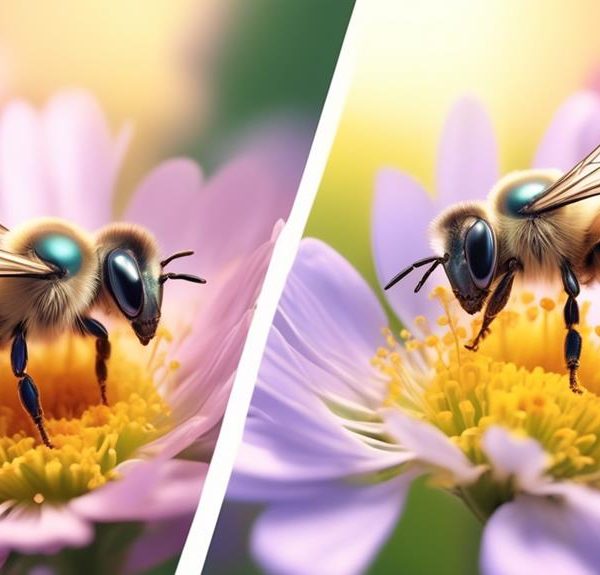Uncover the surprising truth about Mason bees, their incredible pollination capabilities and why they might not be as bad as you think.

Are Mason Bees Bad
Believe it or not, a single mason bee can pollinate as many flowers as 100 honeybees. You might find this statistic startling, especially if you've been conditioned to think of bees as bothersome or even dangerous.
But let's push aside your preconceptions for a moment and consider the mason bee from a fresh perspective. Are they truly bad, or could they be misunderstood?
We're about to embark on a journey that might just change the way you view these industrious insects.
Key Takeaways
- Mason bees are beneficial pollinators that contribute to the growth of fruits and flowers.
- They are non-aggressive creatures and rarely sting, making them safe to have around.
- Mason bees do not cause damage to homes and prefer natural nesting materials like rotten wood.
- Attracting mason bees to your garden can be done by providing a suitable habitat with untreated wood and a nearby mud source.
Understanding Mason Bees
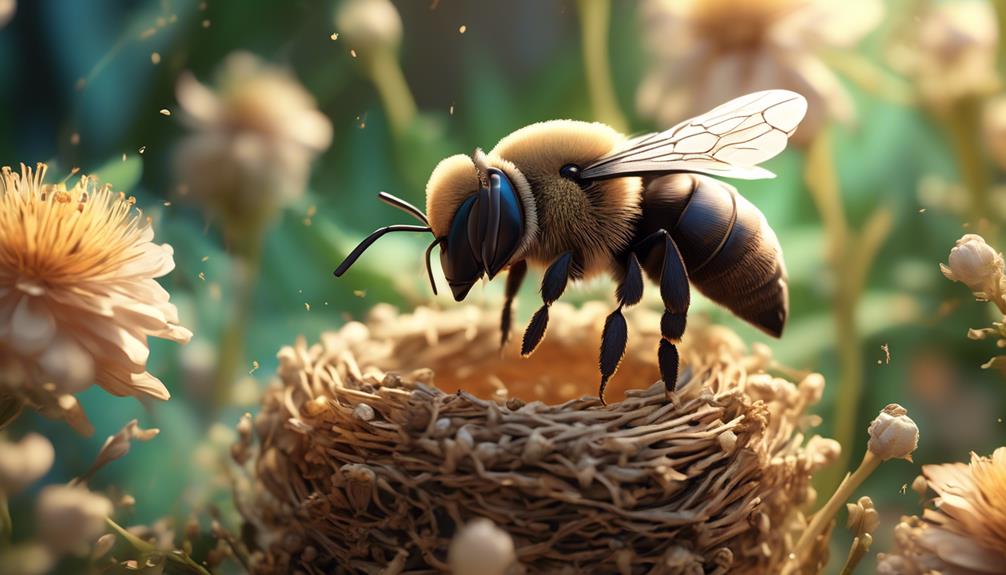
To truly comprehend the nature of mason bees, it's crucial to delve into their unique characteristics, habits, and roles in the ecosystem. Unlike your typical honeybees, mason bees are solitary creatures. Each female is fertile and makes her own nest, usually in hollow reeds or cracks with mud. They aren't aggressive and rarely sting unless threatened.
Now, you're probably wondering about their role in the ecosystem. Well, mason bees are superb pollinators. They're even more effective than honeybees in this task. With their hairy bodies, they easily pick up pollen and transfer it from one flower to another. This process is vital as it allows plants to produce the fruits and seeds that feed wildlife and people alike.
Are mason bees destructive? Not quite. Even though they can burrow into wood structures, they usually prefer decayed or untreated wood, not your well-maintained garden furniture or house structure.
Debunking Mason Bee Myths
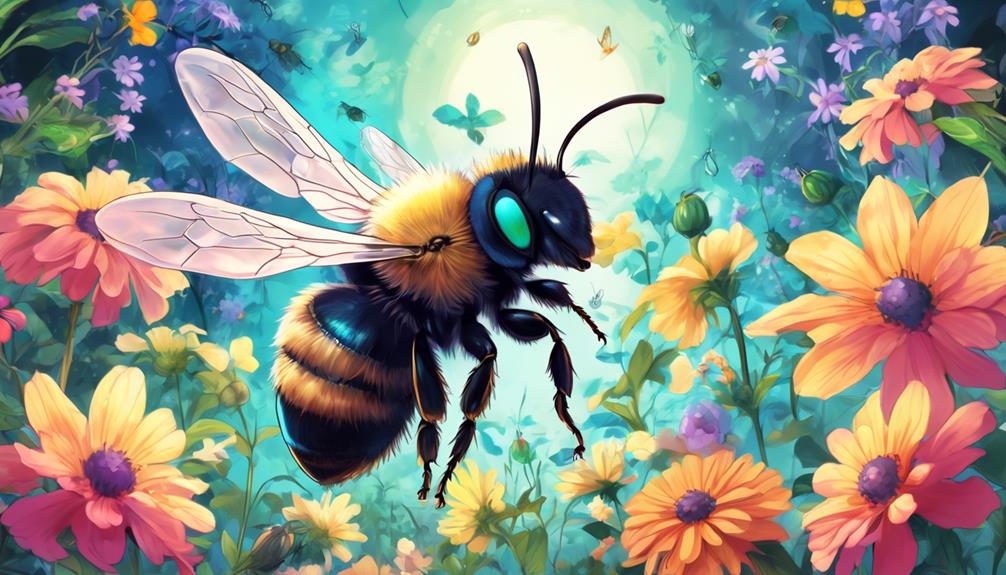
Despite the clear benefits of mason bees, several misconceptions persist, which we'll now address to further enhance your understanding of these fascinating creatures. Myths often stem from a lack of knowledge, so let's bring the truth to light.
Myth | Reality | Explanation |
|---|---|---|
Mason bees sting | Rarely | Mason bees are docile and only sting under extreme threat. Their sting is also far less painful than a honeybee's |
Mason bees damage homes | No | They prefer rotten wood or natural cavities for nesting, not the wood in homes |
Mason bees are as productive as honeybees | No | A single mason bee is equivalent to about 100 honeybees in terms of pollination |
You see, mason bees aren't harmful or destructive. They're non-aggressive pollinators that play a crucial role in our ecosystem. They're unlikely to sting unless threatened, they don't damage your property and, while not as numerically productive as honeybees, they're incredibly efficient pollinators. Understanding these facts can help you appreciate the role these insects play and debunk any misconceptions you may have harbored. Remember, knowledge is the first step in coexisting with nature.
Mason Bees Vs Honeybees
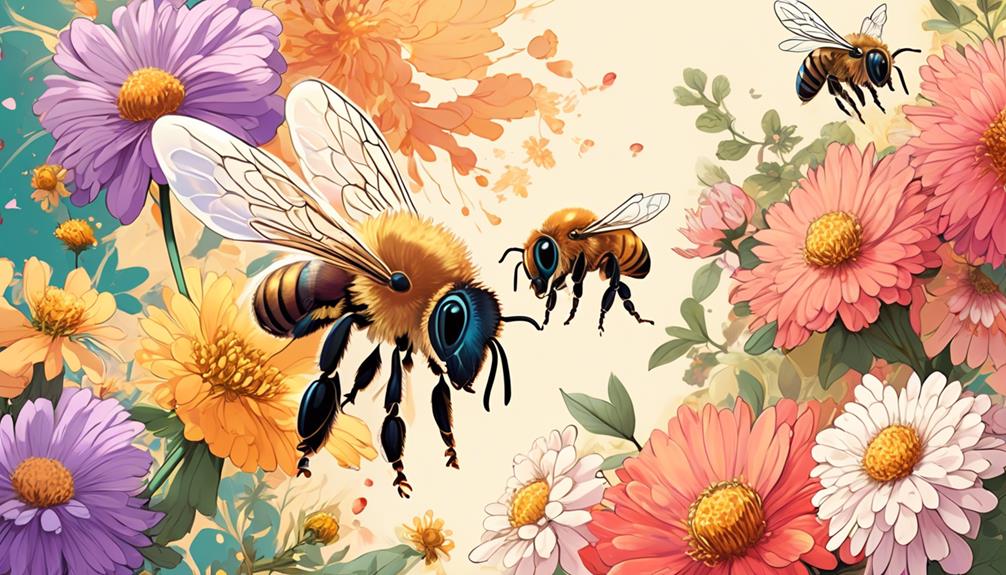
Now, let's delve into a detailed comparison between mason bees and honeybees, highlighting their differences and similarities.
While both are crucial pollinators, they've different characteristics that distinguish them.
Mason bees, unlike honeybees, don't produce honey or beeswax. They're solitary creatures, each female constructing her own nest, while honeybees live in colonies of thousands. Mason bees use mud to build their nests, hence the name. Honeybees, on the other hand, build wax combs within a hive.
Mason bees have a short lifespan, about 6-8 weeks, while honeybees live for several months. Mason bees are also more efficient pollinators than honeybees. They carry pollen on their abdomen, allowing for better pollination, whereas honeybees carry pollen on their hind legs.
In terms of temperament, mason bees are non-aggressive and rarely sting unless extremely provoked. Honeybees can be protective of their hive and are more likely to sting. However, honeybee stings are more painful due to the barbed stinger they leave behind.
While both species contribute significantly to our ecosystem, their behaviors and life cycles are distinctly different. Knowing these differences can help us appreciate both bees' roles in nature and their significance in our lives.
The Impact of Mason Bees

Understanding the impact of mason bees begins with recognizing their vital role in the pollination process. They are known to be highly efficient pollinators that can significantly aid in the growth of fruits and flowers. Unlike honeybees, mason bees don't hoard pollen but carry it back to the nest on their furry bodies, allowing more pollen to be distributed among plants.
Their solitary nature also reduces the risk of disease spread compared to social bees. You'll find them in a variety of habitats, including gardens, orchards, and woodlands, making them highly adaptable and resilient.
Mason bees also have a tendency to stay local, meaning they'll concentrate their efforts on the plants within a short distance of their nest. This makes them ideal for agricultural use, especially in orchards, where they can effectively increase crop yield.
However, it's not all positive. Their solitary nature can make them more vulnerable to predators and environmental changes, and their tendency to bore into wood can cause damage if not properly managed. Still, their benefits far outweigh these drawbacks, making them an asset to any ecosystem.
Attracting or Deterring Mason Bees
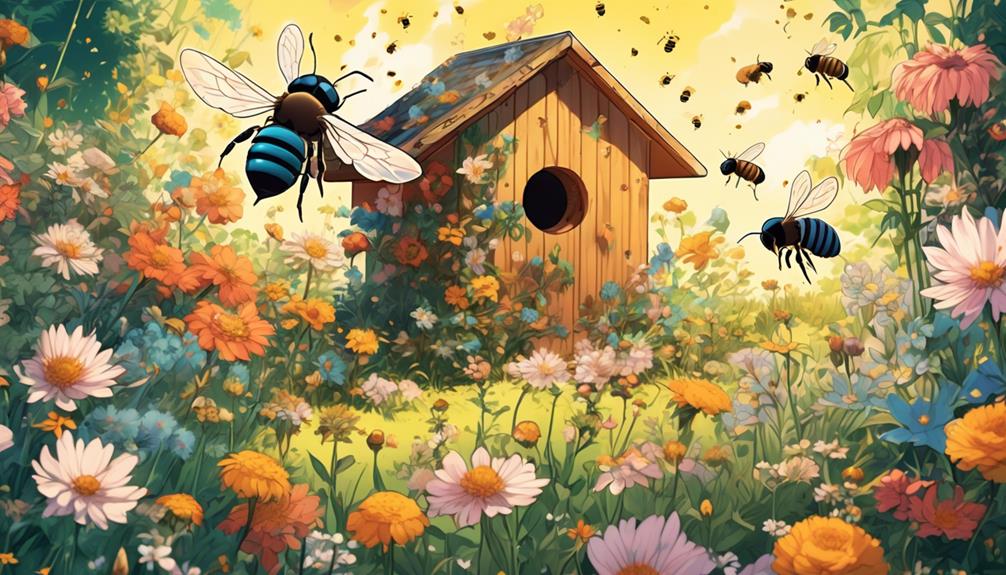
If you're interested in harnessing the pollination benefits of mason bees or mitigating their potential for damage, it's crucial to know the strategies for either attracting or deterring these solitary insects.
To lure mason bees, you need to provide an inviting habitat. These bees are drawn to untreated wood, reeds, or bamboo tubes. You can set up a simple bee house by drilling holes into a block of untreated wood. Ensure the holes are about 5/16ths of an inch in diameter and six inches deep. Locate your bee house in a sunny, south-facing location, preferably at eye level. Also, mason bees need mud for their nesting, so a nearby mud source is essential.
On the other hand, if you're seeking to deter mason bees, you can remove the elements that attract them. Remove untreated wood and potential nesting materials from your garden. If mason bees become a nuisance, consider using a bee deterrent; these are often natural and non-toxic, and can discourage bees without killing them.
Mason Bees: An Environmental Perspective
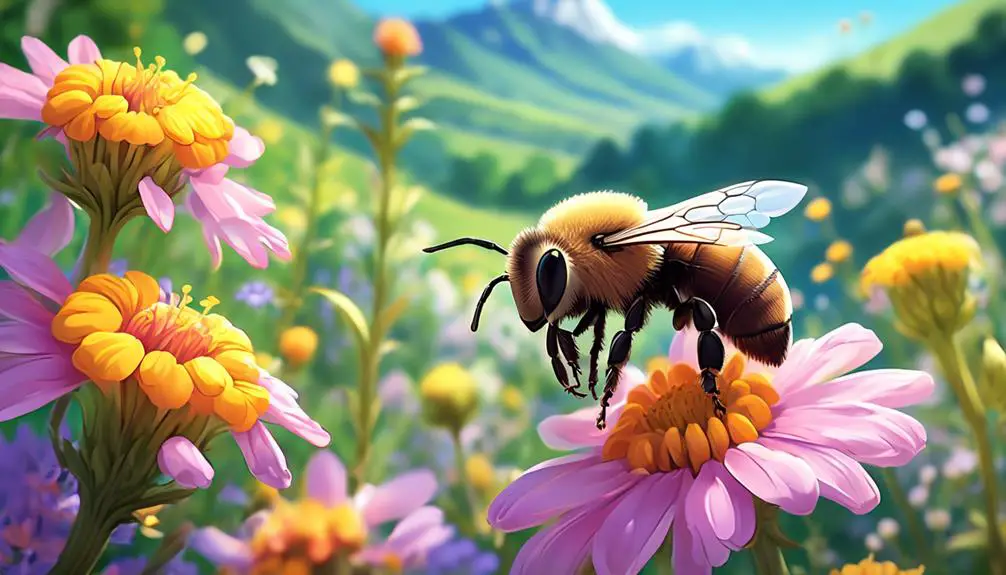
While managing mason bees in your local environment, it's critical to evaluate their broader impact on our ecosystems. As pollinators, these bees play a crucial role in maintaining biodiversity. They're solitary bees, meaning each female builds and cares for her own nest. They're incredibly efficient pollinators, with just a few mason bees doing the work of hundreds of honeybees.
Consider the fact that a single mason bee can visit up to 2,000 flowers in a day. They're native to North America and are adapted to local ecosystems, ensuring the pollination of native plants. This activity contributes to the health of local flora and, consequently, to the balance of the entire ecosystem.
However, it's also important to understand their potential impact on local honeybee populations. There's a concern that mason bees might outcompete honeybees for resources, especially in areas where food sources are limited. While this is a valid concern, it's generally observed that mason bees and honeybees coexist harmoniously, contributing to a diverse pollinator population.
It's clear that when you're considering the environmental perspective, mason bees aren't bad at all – they're vital.
Frequently Asked Questions
What Are the Specific Characteristics to Help Identify a Mason Bee?
To identify a Mason bee, you'll notice they're small and often metallic blue or green. Unlike honey bees, they're solitary creatures, meaning they don't live in hives.
You'll spot them in spring, as they're early pollinators. Look for nests in small holes or tubes, as they're known to use mud to build partitions and seal entrances.
They're non-aggressive, so you won't have to worry about them stinging unless they're threatened.
What Is the Average Lifespan of a Mason Bee?
You're curious about the average lifespan of a mason bee, aren't you?
Well, it's not as long as you might expect. Mason bees typically only live for about a year.
However, most of their life is spent in their cocoon as a larva and pupa. They only emerge as adults for a brief period in spring to mate and lay eggs.
How Do Mason Bees Interact With Other Insects in Their Ecosystem?
No, mason bees aren't bad. They're actually beneficial for your garden! They're excellent pollinators, often more efficient than honeybees. Unlike some bees, they're not aggressive and rarely sting.
They interact peacefully with other insects in their ecosystem, focusing on pollinating and building their nests. They don't compete with other bee species for resources, making them a harmonious addition to any garden ecosystem.
What Regions or Climates Are Mason Bees Most Commonly Found In?
You're likely to find Mason Bees in temperate climates. They're common in North America, Europe, and Asia. These bees prefer regions with cool, wet springs which align with their breeding season.
They're versatile and can adapt to various habitats, including forests, gardens, and urban areas. However, they do need access to mud for their nest-building, so you won't find them in desert or arid areas.
It's also important to note they're solitary bees, not forming colonies.
Can Mason Bees Sting or Cause an Allergic Reaction?
Yes, you could potentially get stung by a mason bee. However, it's rare because they're not aggressive. Only the females can sting and they'll only do so if they're threatened. Their sting is much less painful than a honeybee's.
As for allergies, it's possible, but again, it's not common. If you're already allergic to bee stings, you'd likely react to a mason bee sting too.
Always take precautions when interacting with any bees.
Conclusion
In summary, you shouldn't fear mason bees. They're not harmful but rather beneficial, acting as efficient pollinators akin to honeybees.
Their impact on our ecosystem is significant, contributing to plant biodiversity.
Whether you're aiming to attract or deter them, it's essential to understand their nature.
From an environmental standpoint, mason bees are a blessing, not a curse.
So, let's debunk the myths and appreciate these tiny creatures for the job they do.

